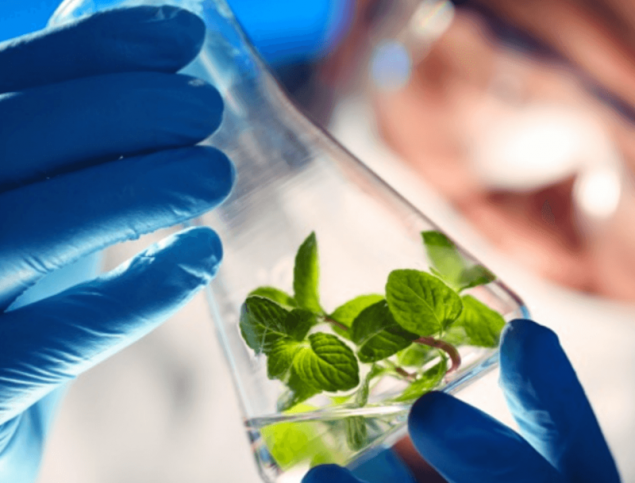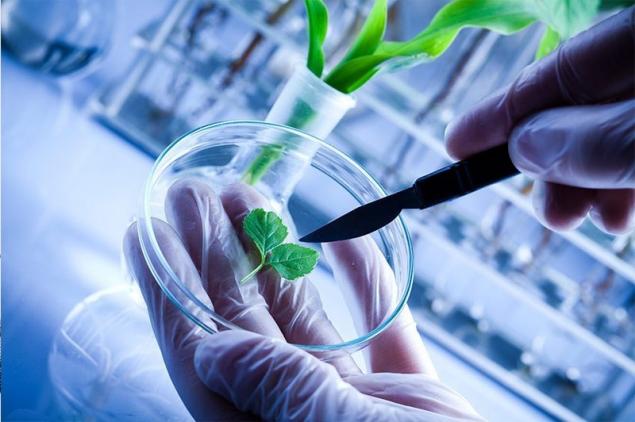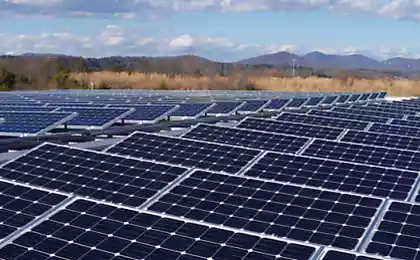624
Live plants can become the prototype of the future of solar batteries
Exploring the light-harvesting complexes of living plants, Krasnoyarsk Physics explained how plants "collected" light. According to scientists, this is the most effective system to absorb and transfer light energy for today.

If it is possible to understand the molecular structures work in such systems, in the future it will be possible to design synthetic analogues having improved in comparison with natural characteristics. In the future, this will create a new super-fast processor, solar cells and artificial photosynthesis system.
Now the research team with the help of computer simulation calculates the behavior of molecules when light passes through a molecular aggregates.
According to the scientist, Siberian Federal University, leading researcher of the Laboratory of Nonlinear Optics and Sergey Polyutova spectroscopy, the study is the development of the ideas of scientific work published even in 2012: "For several decades in the energy transfer studies in molecular aggregates and photosynthetic complexes leaves alive plants ignored the need to consider the so-called vibronic interaction. This is the case when the idea of lying on the surface, but no one was bent and it is not picked up, as it seemed unimportant. It appeared important. The result was a small whole new scientific field and was able to explain a number of discrepancies between theory and experiment, progress in understanding how the nature is arranged, and on this basis to a more considerate design analogues of natural photosynthesis. »

Sergei Polyutova study carried out in collaboration with colleagues from the universities of Germany, Sweden and China, its results have been published in the prestigious scientific journal Physics Reports. In the article "exciton-vibronic interaction in the dynamics and spectroscopy of Frenkel excitons in molecular aggregates," the authors also describe all the currently existing set of basic and advanced methods to account for the effects in question. In the near future, scientists hope to move from theory and modeling to experiments. Add an article published in a separate issue of the magazine and entered the 1% of the most cited papers in the field of science.

If it is possible to understand the molecular structures work in such systems, in the future it will be possible to design synthetic analogues having improved in comparison with natural characteristics. In the future, this will create a new super-fast processor, solar cells and artificial photosynthesis system.
Now the research team with the help of computer simulation calculates the behavior of molecules when light passes through a molecular aggregates.
According to the scientist, Siberian Federal University, leading researcher of the Laboratory of Nonlinear Optics and Sergey Polyutova spectroscopy, the study is the development of the ideas of scientific work published even in 2012: "For several decades in the energy transfer studies in molecular aggregates and photosynthetic complexes leaves alive plants ignored the need to consider the so-called vibronic interaction. This is the case when the idea of lying on the surface, but no one was bent and it is not picked up, as it seemed unimportant. It appeared important. The result was a small whole new scientific field and was able to explain a number of discrepancies between theory and experiment, progress in understanding how the nature is arranged, and on this basis to a more considerate design analogues of natural photosynthesis. »

Sergei Polyutova study carried out in collaboration with colleagues from the universities of Germany, Sweden and China, its results have been published in the prestigious scientific journal Physics Reports. In the article "exciton-vibronic interaction in the dynamics and spectroscopy of Frenkel excitons in molecular aggregates," the authors also describe all the currently existing set of basic and advanced methods to account for the effects in question. In the near future, scientists hope to move from theory and modeling to experiments. Add an article published in a separate issue of the magazine and entered the 1% of the most cited papers in the field of science.
























